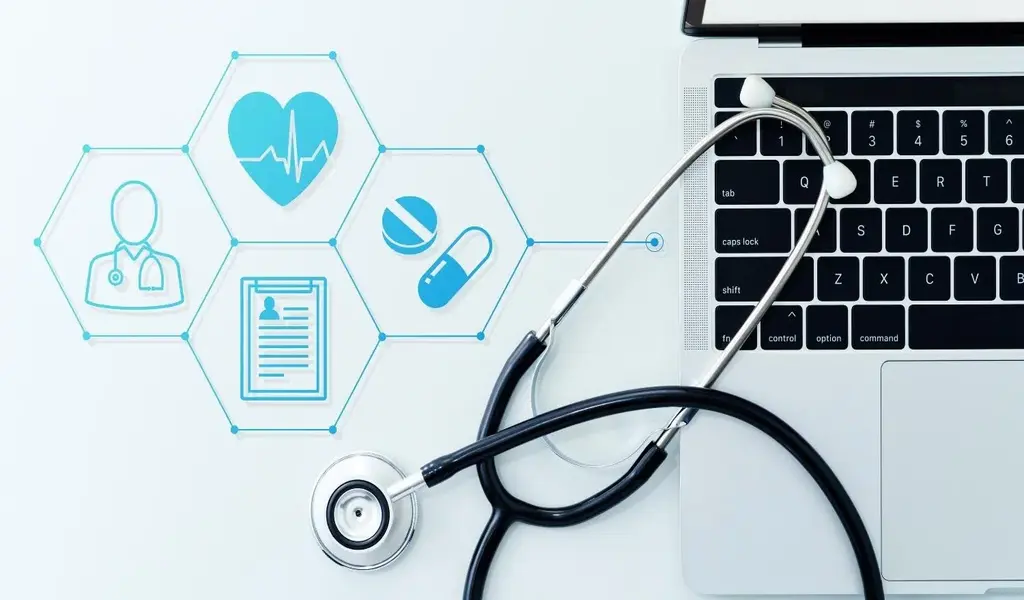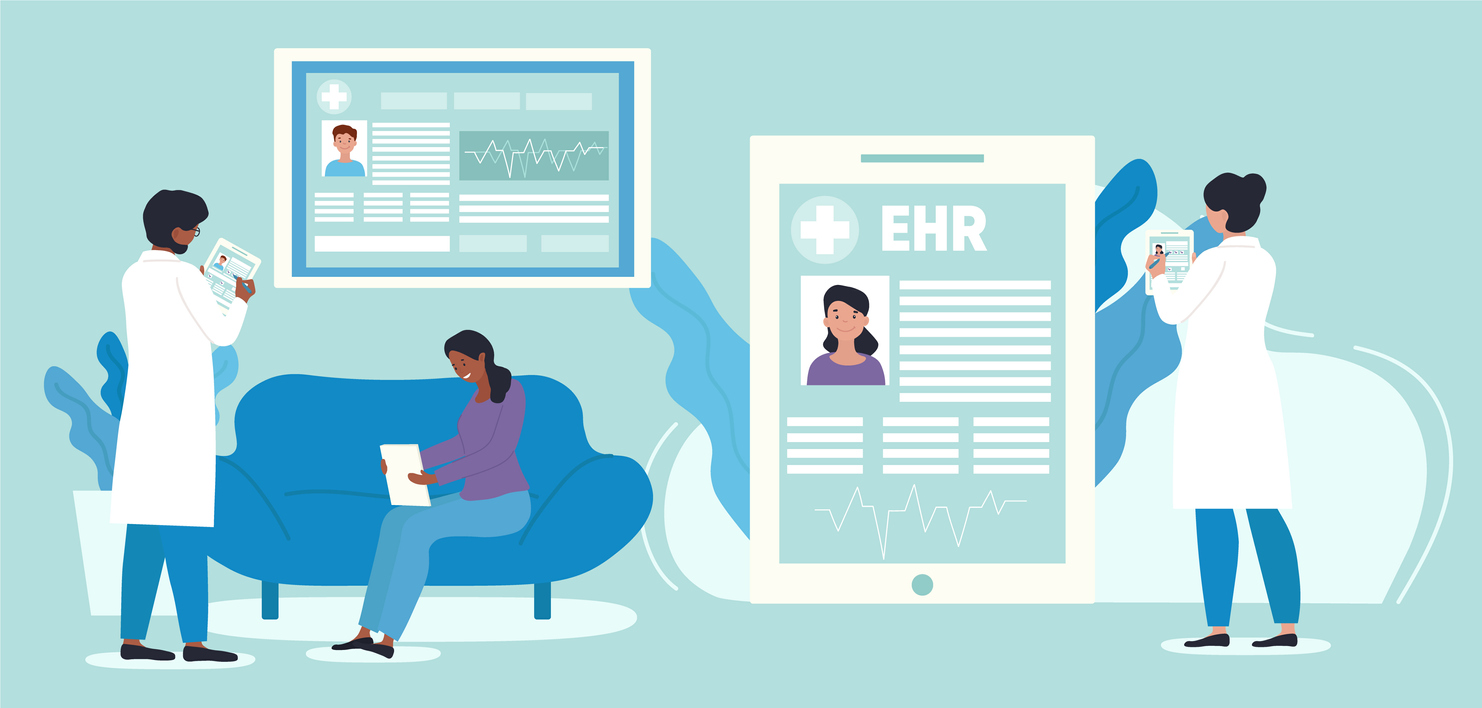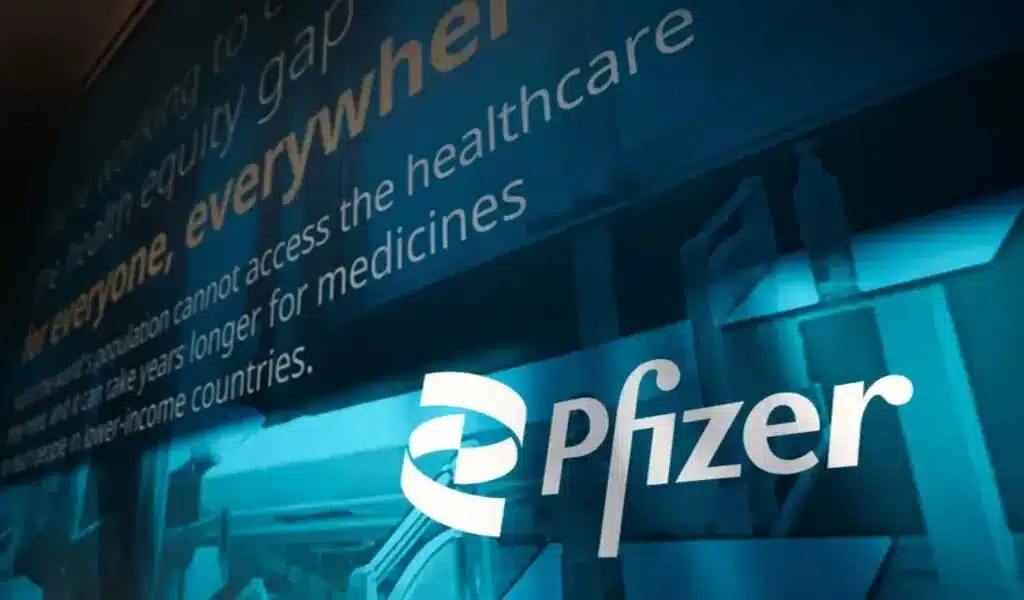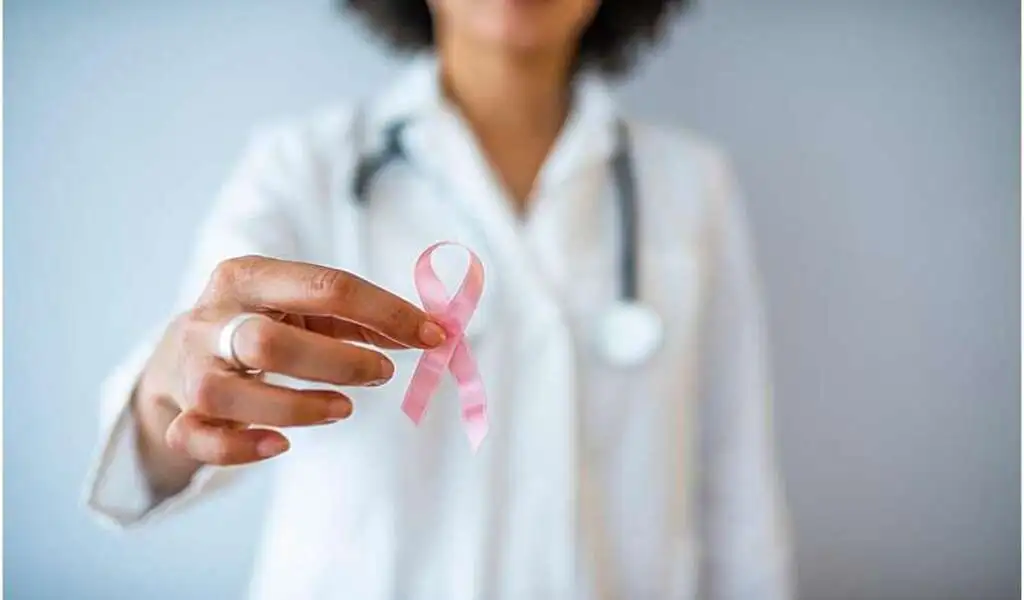Health
Health Information Technology: The Future Of Healthcare

In the past few decades, there has been a tremendous growth in the field of health information technology. Health Information Technology (HIT) refers to the use of electronic systems to manage, store, and share health information.
This technology has revolutionized healthcare delivery, making it more efficient, accurate, and patient-centered. From electronic health records (EHRs) to telemedicine, HIT has become an essential tool in modern healthcare. In this article, we will explore the benefits of HIT, its impact on patient outcomes, and its potential to shape the future of healthcare.
What is Health Information Technology?

Health Information Technology (HIT) encompasses a wide range of technologies and practices used to manage health information. Some common examples of HIT include:
- Electronic Health Records (EHRs): EHRs are digital versions of a patient’s medical history, including diagnoses, medications, allergies, and lab results.
- Telemedicine: Telemedicine allows healthcare providers to deliver medical services remotely, using video conferencing or other digital communication tools. You can check and look for telemedicine website because they are always online for your health needs.
- Clinical Decision Support Systems (CDSS): CDSS are computer programs that help healthcare providers make clinical decisions by providing real-time information about a patient’s health status.
- Health Information Exchange (HIE): HIE allows different healthcare providers to share a patient’s health information securely and electronically.
The Benefits of Health Information Technology:
HIT has numerous benefits for both patients and healthcare providers. Some of these benefits include:
- Improved Patient Outcomes: HIT enables healthcare providers to access real-time patient data, which can improve diagnosis, treatment, and care coordination. This can lead to better patient outcomes, including reduced hospital read missions, improved medication adherence, and better chronic disease management.
- Increased Efficiency: HIT can automate many administrative tasks, such as appointment scheduling and billing, which can free up time for healthcare providers to focus on patient care. This can lead to increased efficiency and productivity, benefiting patients and providers.
- Cost Savings: HIT can reduce the cost of healthcare by eliminating the need for paper records, reducing errors, and improving care coordination. This can lead to significant cost savings for healthcare providers and patients.
- Patient Empowerment: HIT can empower patients by giving them access to their own health information, enabling them to participate more actively in their own care. Patients can view their lab results, schedule appointments, and communicate with their healthcare providers electronically, which can improve patient satisfaction and engagement.
The Impact of Health Information Technology on Patient Outcomes

HIT has had a significant impact on patient outcomes, improving diagnosis, treatment, and care coordination. Some specific examples of how HIT has improved patient outcomes include:
- Reduced Hospital Readmissions: HIT can help healthcare providers identify patients who are at risk of readmission, enabling them to intervene early and prevent readmissions.
- Improved Medication Adherence: HIT can help patients manage their medications more effectively, reducing the risk of adverse drug events and improving medication adherence.
- Better Chronic Disease Management: HIT can enable healthcare providers to monitor patients with chronic diseases more closely, leading to earlier interventions and better disease management.
- Improved Patient Safety: HIT can reduce errors and improve patient safety by providing healthcare providers with real-time information about a patient’s health status and medication history.
The Future of Health Information Technology:
The future of HIT is bright, with new technologies and innovations emerging all the time. Some of the areas where HIT is likely to make a significant impact in the coming years include:
- Artificial Intelligence (AI): AI has the potential to transform healthcare by enabling healthcare providers to make more accurate diagnoses and develop personalized treatment plans. AI-powered chatbots can also provide patients with personalized healthcare advice and support.
- Wearable Technology: Wearable technology, such as smartwatches and fitness trackers, can collect real-time health data and share it with healthcare providers. This can enable more personalized care and early interventions.
- Virtual Reality (VR): VR can be used to treat a range of mental health conditions, such as anxiety and phobias. VR therapy can provide patients with a safe and controlled environment to confront their fears and develop coping strategies.
- Blockchain: Blockchain technology can be used to securely store and share health information, enabling patients to have greater control over their data and providing healthcare providers with a more complete picture of a patient’s health history.
Implementing Health IT

The implementation of Health IT can be complex and challenging, requiring significant planning, resources, and training. Healthcare organizations must ensure that their Health IT systems are secure, reliable, and compliant with privacy and security regulations.
They must also ensure that their staff are trained on how to use the systems effectively and that patients are informed about how their health information will be collected, stored, and shared.
Conclusion:
Health Information Technology is transforming the way healthcare is delivered, improving patient outcomes, and empowering patients to take a more active role in their care.
From EHRs to telemedicine, HIT has become an essential tool in modern healthcare. As new technologies and innovations emerge, the potential for HIT to improve patient outcomes and shape the future of healthcare is limitless.
Frequently Asked Questions:
- Is Health Information Technology secure? Yes, Health Information Technology is designed with security and privacy in mind. Healthcare providers are required to comply with strict data security regulations, such as the Health Insurance Portability and Accountability Act (HIPAA), to ensure patient data is protected.
- Can patients access their health information online? Yes, many healthcare providers now offer patient portals where patients can access their health information online. Patients can view their lab results, medication history, and appointment schedules, and communicate with their healthcare providers electronically.
- Can Health Information Technology improve patient outcomes? Yes, Health Information Technology has been shown to improve patient outcomes by enabling healthcare providers to access real-time patient data, reducing errors, and improving care coordination.
RELATED CTN NEWS:
How To Lose Weight Fast: Tips, Tricks, And Techniques To Help Shed Pounds Quickly
How To Insert GIFs In A Google Slides Presentation?
Google Rolls Out Nearby Share Beta App To Transfer Files Between Windows And Android

Health
Report Causes Pfizer Stock to Climb Approximately $1 Billion Acquired by Starboard

(VOR News) – According to a rumor that activist investor Pfizer Starboard Value has taken a holding in the struggling pharmaceutical business that is expected to be worth around one billion dollars, the stock of Pfizer (PFE) is on the increase in premarket trading on Monday.
This comes after the report was made public. The report was made available to the general public following this. Starboard Value was successful in moving forward with the acquisition of the position.
Starboard is said to have approached Ian Read, a former chief executive officer of Pfizer, and Frank D’Amelio, a former chief financial officer, in order to seek assistance with its goals of boosting the performance of the company, according to the Wall Street Journal. Read and D’Amelio are both former Pfizer executives.
The purpose of this is to facilitate the accomplishment of its objectives, which include enhancing the overall performance of the firm.
In their previous jobs, D’Amelio and Read were chief financial officers.
It is stated in the report that the hedge fund is of the opinion that Pfizer, which is currently being managed by Albert Bourla, who succeeded Read as Chief Executive Officer (CEO) in 2019, does not demonstrate the same level of mergers and acquisitions (M&A) discipline that Read did. Bourla took over for Read in 2019. Read was succeeded by Bourla in the year 2019.
Pfizer, a multinational pharmaceutical conglomerate, has made substantial investments in the acquisition of more companies that are involved in the research and development of cancer medicines.
These businesses have been acquired for billions of dollars. The biotechnology company Seagen, which was acquired by Pfizer in the previous year for a price of $43 billion, is included in this category. One of the businesses that can be classified as belonging to this category is Seagen.
In spite of the fact that the S&P 500 Index experienced a 21% increase in 2024.
No major trading occurred in Pfizer stock that year.
Due to the fact that the demand for Pfizer’s COVID-19 vaccines fell after the firm reached its pandemic peak in 2021, the share price of the corporation has decreased by over fifty percent since that time.
This drop has occurred ever since the company’s shares reached their maximum peak, which was during the time that this decline occurred. Not only have they not changed at all, but they have also remained essentially stable. This is in contrast to the S&P 500, which has gained 21% since the beginning of this year.
Recently, the corporation was forced to take a hit when it decided to recall all of the sickle cell illness medications that it had distributed all over the world.
Fears that the prescription could lead patients to experience severe agony and possibly even death were the impetus for the decision to recall the product. In spite of the fact that Pfizer’s stock is increasing by almost three percent as a result of the news that followed the company’s decision, this is the circumstance that has come about.
SOURCE: IPN
SEE ALSO:
New Study Reveals Drinking Soda Pop Increases the Risk of Stroke
The Mpox Vaccine’s Protection Decreases Within a Year; Booster Requirements
Health
New Study Reveals Drinking Soda Pop Increases the Risk of Stroke

A recent report from global research indicates that excessive consumption of coffee or soda pop is associated with an increased risk of stroke, although the intake of black and green tea is correlated with a reduced risk. Excessive consumption of soda pop or coffee warrants caution!
Recent research indicates that it may substantially elevate the risk of stroke.
Consuming four cups of coffee daily elevates the risk of stroke, according to studies, although ingesting 3-4 cups of black or green tea daily typically offers protection against stroke. Additionally, consume more coffee; it may reduce your risk of mortality.
Recent findings from global research studies co-led by the University of Galway and McMaster University, alongside an international consortium of stroke researchers, indicate that soda, encompassing both sugar-sweetened and artificially sweetened variants such as diet or zero sugar, is associated with a 22 percent heightened risk of stroke. The risk escalated significantly with the consumption of two or more of these beverages daily.
Stroke Risk Fizzy Drinks and Soda Pop
The correlation between fizzy drinks consumption and stroke risk was most pronounced in Europe, the Middle East, Africa, and South America. Women exhibit the most elevated risk of stroke from bleeding (intracranial hemorrhage) associated with fruit juice beverages. Consuming over 7 cups of water daily diminishes the likelihood of stroke due to a clot.
Researchers observed that numerous items advertised as fruit juice are derived from concentrates and have added sugars and preservatives, potentially negating the advantages often associated with fresh fruit and instead elevating stroke risk.
Fruit juice beverages were associated with a 37 percent heightened risk of stroke resulting from bleeding (intracranial hemorrhage). Consuming two of these beverages daily increases the risk thrice.
Consuming over four cups of coffee daily elevates the risk of stroke by 37 percent, although lower consumption levels do not correlate with stroke risk. Conversely, tea consumption was associated with an 18-20 percent reduction in stroke risk. Additionally, consuming 3-4 cups daily of black tea, such as Breakfast and Earl Grey varieties, excluding green and herbal teas, was associated with a 29 percent reduced risk of stroke.
Consuming 3-4 cups of green tea daily was associated with a 27 percent reduction in stroke risk. Notably, the addition of milk may diminish or inhibit the advantageous effects of antioxidants present in tea. The lower risk of stroke associated with tea consumption was negated for individuals who added milk.
Disclaimer: This article is intended solely for informational reasons and should not be considered a replacement for professional medical counsel. Consistently consult your physician regarding any inquiries pertaining to a medical problem.
Related News:
Starbucks Faces Sales Decline Amid Price Fatigue and Rising Competition
Starbucks Faces Sales Decline Amid Price Fatigue and Rising Competition
Health
Following a Diagnosis of Breast Cancer, What Else Should You Know?

(VOR News) – Even though breast cancer affects one in eight American women, receiving a diagnosis can make a woman feel isolated.
Experts in breast cancer from the American College of Physicians (ACS) advise patients on how to manage their disease so that they may better cope with this awful information.
First, the kind and stage of breast cancer dictates the course of your care.
In addition to immunotherapy and chemotherapy, there are various surgical options available for the treatment of breast cancer.
Women of African descent are disproportionately affected by triple-negative breast cancer, an extremely aggressive form of the disease that has never proven easy to treat.
According to the American Cancer Society, pembrolizumab (Keytruda), an immunotherapy, has been shown to be helpful when combined with chemotherapy and is currently the recommended course of treatment for certain combinations of triple-negative breast cancer.
In her presentation, Dr. Katharine Yao said, “It’s really important that the patient and physician discuss the patient’s preferences and values when deciding what type of treatment to pursue and that they have an honest, individualized discussion with their care team.”
She is currently responsible for developing breast cancer treatment recommendations for more than 575 hospitals and institutions nationwide in her role as chair of the American College of Surgeons’ National Accreditation Program for Breast Institutions (NAPBC).
Yao, vice chair of research at Endeavor Health NorthShore Hospitals in New York, pointed out that each decision made about a patient’s treatment plan should take her preferences and diagnosis into consideration.
She ought to think about whether she would prefer a mastectomy—a surgical procedure that involves removing the entire breast with or without reconstruction—or a lumpectomy, which involves a surgical procedure that spares part of the breast tissue.
She stated that “the breast cancer you have may be very different from the breast cancer you hear about in your neighbor, colleague, or friend” in a press release issued by the American Cancer Society (ACS).
“Consider that while discussing breast cancer with others.”
Throughout your journey, it is critical that you look after your emotional health because having breast cancer may have a detrimental impact on your mental health.
“Getting a cancer diagnosis does not mean that everything in your life stops to be normal.” Director of the Fellowship in the Diseases of the Breast program at the Winthrop P. Rockefeller Cancer Institute at the University of Arkansas and state head of the American Cancer Society Commission on Cancer for Arkansas, Dr. Daniela Ochoa She thinks adding the burden of a cancer diagnosis and treatment to all the other pressures in life may be taxing.
“Managing stress and emotional health is vital component of a treatment plan.”
Ochoa recommends clinically trained psychologists and social workers who have assisted people in coping with cancer to anyone receiving treatment. Learning coping techniques might also be facilitated by joining cancer support groups or cancer wellness initiatives.
Breast cancer specialists say your care team is crucial.
The American Cancer Society (ACS) defines comprehensive care as having support at every stage of the procedure from surgeons, oncologists, patient navigators, nurses, social workers, psychologists, and other specialists.
After receiving a breast cancer diagnosis, women should see a surgeon or medical oncologist to explore their options; nevertheless, treatment shouldn’t be discontinued after just one appointment or after surgery is over.
Additionally, you can ask trustworthy friends or family members to accompany you to appointments and aid you with research or notes. They could serve as a network of support for you.
Yao stated in his talk that “one of the most important things is that patients should search out a team they have confidence in, that they trust will have their back when they need it, and a team they feel they can get access to and that will help them when they are in need.”
SOURCE: MP
SEE ALSO:
The Mpox Vaccine’s Protection Decreases Within a Year; Booster Requirements
COVID was a Paradigm Shift in Health Policymaking, Says Commissioner Stella Kyriakides.
Rwanda Reports 8 Deaths Linked To Ebola-Like Marburg Virus Days After It Declared An Outbreak
-

 News3 years ago
News3 years agoLet’s Know About Ultra High Net Worth Individual
-
Entertainment2 years ago
Mabelle Prior: The Voice of Hope, Resilience, and Diversity Inspiring Generations
-

 Health4 years ago
Health4 years agoHow Much Ivermectin Should You Take?
-

 Tech2 years ago
Tech2 years agoTop Forex Brokers of 2023: Reviews and Analysis for Successful Trading
-

 Lifestyles3 years ago
Lifestyles3 years agoAries Soulmate Signs
-

 Movies2 years ago
Movies2 years agoWhat Should I Do If Disney Plus Keeps Logging Me Out of TV?
-

 Health3 years ago
Health3 years agoCan I Buy Ivermectin Without A Prescription in the USA?
-

 Learning3 years ago
Learning3 years agoVirtual Numbers: What Are They For?